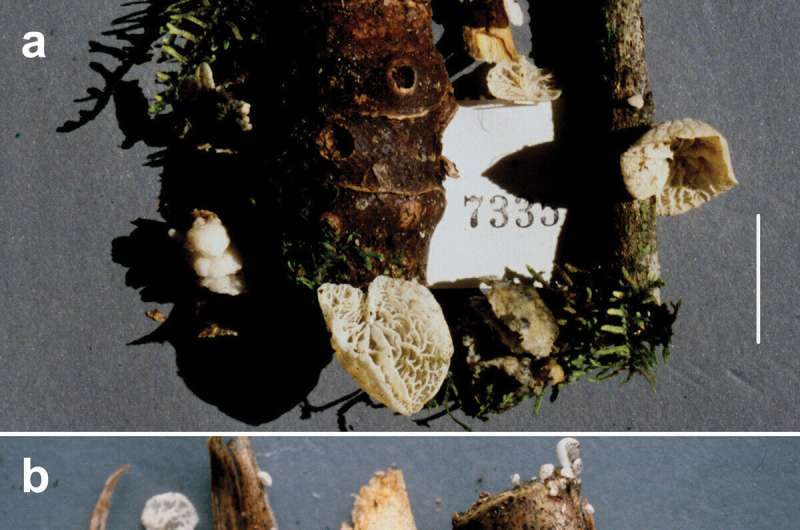This article has been reviewed according to Science X's editorial process and policies. Editors have highlighted the following attributes while ensuring the content's credibility:
fact-checked
proofread
A new genus of fungi on grasses

While ecologically important, small mushrooms on monocots (grasses and sedges) are rarely studied and a lack of information about their habitat and DNA sequences creates difficulties in determining their presence or absence in ecological studies and their genetic relationships to other mushroom taxa.
A recent study led by Drs. Karen W. Hughes and Ronald H. Petersen (University of Tennessee, Knoxville, TN, U.S.) examined a mushroom species, Campanella subdendrophora, (also known as Tetrapyrgos subdendrophora), which fruits on grasses in the US Pacific Northwest.
The researchers evaluated its phylogenetic position concerning both Campanella and Tetrapyrgos and determined that a new genus, Metacampanella was needed for this taxon (e.g., Metacampanella subdendrophora). Further, they identified other taxa that belonged to this group, including taxa from Costa Rica and New Zealand, and named and described them where feasible. Metacampanella also includes an unknown taxon from the central US prairie grassland.
In this latter case, the sequences were isolated from Prairie Dog dung (Rodents that eat root and shoot vegetation) and are presumably grass endophytes. An endophyte of Elymus mollis (dune grass) was also identified as belonging to Metacampanella (Metacampanella sinecystidia).
"To date, several Metacampanella appear to be associated with grasses. Future environmental studies may identify other members of this new genus," Dr. Hughes said.
The paper is published in the journal Mycology.
More information: Ronald H. Petersen et al, Metacampanella gen. nov.: The Campanella dendrophora complex, Mycology (2024). DOI: 10.1080/21501203.2024.2309898
Provided by Tsinghua University Press




















